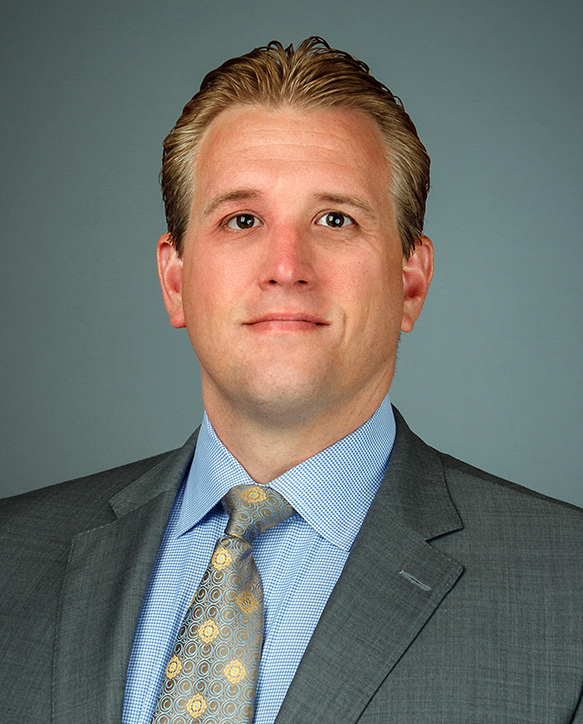
Men are no strangers to prostate issues. Starting at age 40, a man’s prostate will start to continuously grow until the day they die. This doesn’t always pose a problem, but about one-third of men over the age of 60 will experience the effects of benign prostatic hyperplasia (BPH), the non-cancerous enlargement of the prostate.
Prostate enlargement is a common issue among the male population, and treatments vary widely. Your male patients should know they don’t have to suffer through the symptoms of BPH. “If men aren’t treated for BPH, their symptoms will only get worse as their prostate continues to grow,” said Thomas Mueller, M.D., a urologist with New Jersey Urology and staff physician at Inspira Medical Center Vineland. Dr. Mueller offered some tips on how to talk to your patients about prostate health and treatments for BPH.
Signs and Symptoms
When monitoring your patients’ prostate health, there a few questions you should ask about their urinary habits:
- How often are they getting up at night to urinate?
- How strong is their stream when they urinate?
- Does the stream start and stop?
- Are they straining to urinate?
- How urgent is their sensation to urinate?
- Do they feel empty when urination has completed?
- Do their bathroom habits affect daily activities?
If your patients are experiencing symptoms of prostate enlargement, it’s important to first rule out cancer before considering treatments for BPH.
Treatments for BPH
Treatment options for BPH can vary from oral medications to inpatient or outpatient surgery. “A urologist will determine the right treatment for each specific patient,” said Dr. Mueller. “We use the size and shape of the prostate, as well as the patient’s desires and lifestyle needs, to guide our recommendations.”
Many traditional treatments for BPH involve removing tissue in the prostate to help men urinate more effectively, like transurethral resection of the prostate (TURP). These procedures tout high success rates among men, but they also fall short when it comes to desired recovery time. “TURP is the gold standard for BPH treatments, but men’s symptoms tend to get worse after the procedure before they get better,” said Dr. Mueller.
Patients may experience more urgency to urinate, burning and more frequent urination for two to four months, as well as have a potential risk of permanent incontinence, erectile dysfunction or change in ejaculatory function.
Enter Aquablation Therapy
Thankfully, with recent medical advancements, there’s a new treatment option for men with BPH: aquablation therapy. “Aquablation is a robotic procedure now available at New Jersey Urology that uses room temperature water to resect the obstructive tissue of the prostate,” said Dr. Mueller.
After the patient is placed under general anesthesia, specialists perform a real-time ultrasound of the prostate to map out the borders of the prostate gland in multiple dimensions. “We use this to create a personalized treatment plan for each patient, based on their particular size and shape. The robot then executes the customized treatment plan, guiding the precisely calibrated waterjet with speed and accuracy,” said Dr. Mueller.
With Aquablation therapy, men experience the same excellent results of procedures like TURP, but without the extended post-operative symptoms. “Heat is the enemy when it comes to symptomatic recovery. Procedures using an electrocautery loop cause inflammation in the prostate, which is why the symptoms get worse before getting better. But Aquablation therapy removes prostatic tissue with a heat-free waterjet, thus eliminating the possibility of complications arising from thermal injury and cutting recovery time down to two to four weeks instead of two to four months,” said Dr. Mueller.
The Aquablation technique also results in zero risk of erectile dysfunction and long-term incontinence, and rates of reduced ejaculatory function are between 8 to 19 percent, compared to a 60 to 80 percent chance with TURP, according to Dr. Mueller.
The Importance of Proactive Care
Your patients should know they don’t have to live with the discomfort of an enlarged prostate. There are many treatments to address BPH, including TURP and Aquablation therapy. “As providers, we should be actively participating in making BPH better,” said Dr. Mueller. “Getting male patients off of medication and treating the root cause of their issues can make a world of difference in their quality of life and their health as they age.”
“By delaying proactive treatment for BPH, we’re missing opportunities for men’s bladders to be saved and exposing men to undesired side effects. We see too many bladders that have been overworked for too long. The solution is to address prostate issues head-on and take care of them before they get worse. It’s up to us to give our patients plenty of BPH treatment options so they can choose what fits best with their lifestyle and needs,” said Dr. Mueller.
Currently, Inspira Health and our physician colleagues at New Jersey Urology (NJU) are offering Aquablation therapy treatments which are being performed at Inspira Medical Center Vineland. If you have a patient experiencing symptoms of BPH and you want to refer him to NJU for an evaluation, please reach out to Dr. Thomas J. Mueller’s scheduling office at 877-388-2778.
